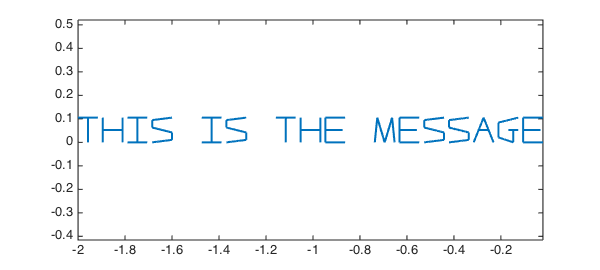The scribble command produces piecewise linear complex chebfuns whose plots look like words, like this:
message = scribble('This is the message');
LW = 'linewidth'; lw = 2;
plot(message, LW, lw), axis equal
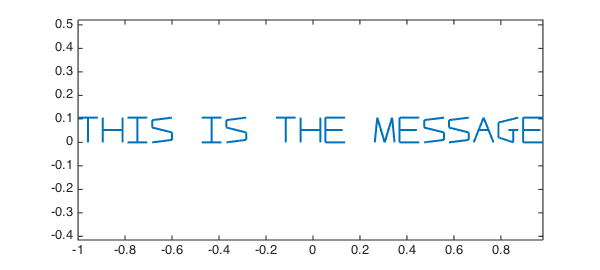
Here's another string:
key = scribble('Aardvarks eat ants');
plot(key, 'r', LW, lw), axis equal
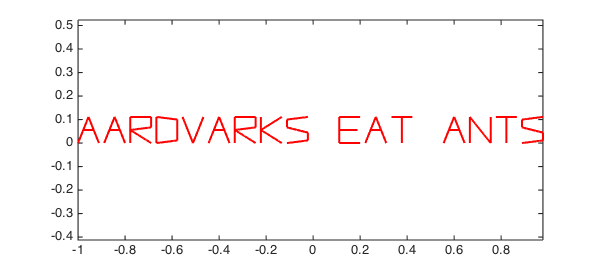
Now if we plot the sum of the two, we get nonsense:
encrypted = message + key; plot(encrypted, 'm', LW, lw), axis equal
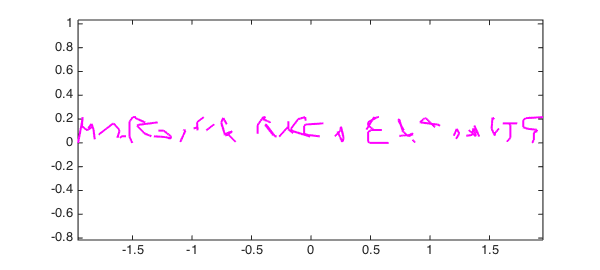
So we've invented a new encryption scheme! For of course the original message can be recovered by subtracting off that key:
message2 = encrypted - key; plot(message2, LW, lw), axis equal
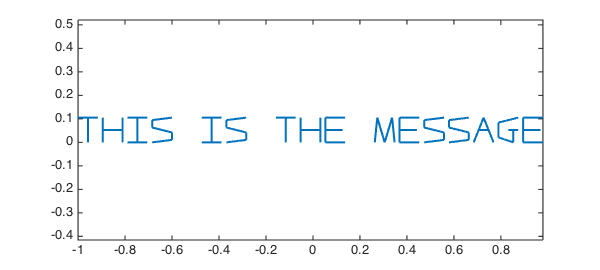
So long as we're investigating the world's most expensive and least secure method of encryption, we might as well tangle up the text in the complex plane a bit too. I'll bet you can't read this:
scrambled = exp(1.5i*(encrypted)); plot(scrambled, 'g', LW, lw), axis equal
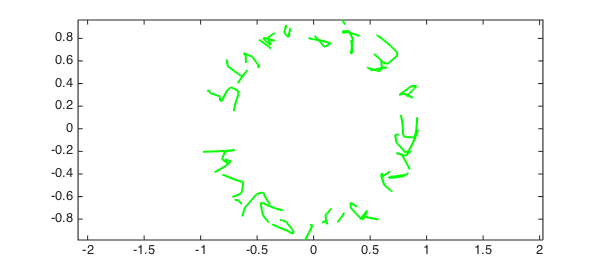
But we can get the message back with a little unscramble:
message3 = unwrap(log(scrambled))/1.5i - 1 - key; plot(message3, LW, lw), axis equal
